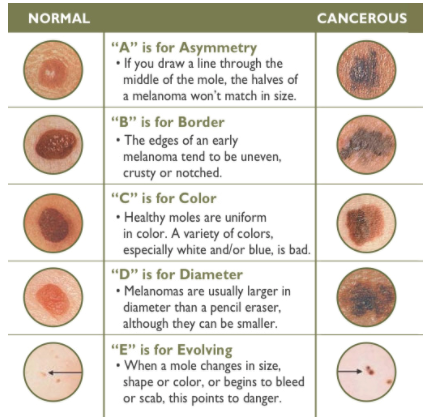Protect Your Skin: 3 Common Types of Skin Cancer and How to Detect Them This Summer
Summer is a great time to take more walks, garden and enjoy a dip in the pool but it’s also a time when seniors need to stay mindful of their sun exposure. Older adults might already make sunblock, hats and long sleeves a priority because they know skin becomes more vulnerable as they age but they also need to be on the watch for signs of skin cancer. It’s actually the most common type of cancer in both the United States and Canada.
According to the Skin Cancer Foundation, people who use sunscreen with an SPF of 15 or higher daily show 24% less skin aging than those who don’t. Not only does sunblock help protect the skin from UV rays, it can also help prevent the development of skin cancer. It’s just as important to use sun protection as it is to recognize a skin abnormality, whether it’s malignant or benign. Here are the three (3) most common types of skin cancer and what to look for:
1. Basal Cell Carcinoma (BCC)
This is the most common type of skin cancer. Typically shows up in the neck or face and in both fair and darker skin tones. Signs to look for:
- Pearly or waxy bump
- Flat, flesh-toned or brown scar-like lesion
- Bleeding or scabbing sore that heals, then returns
2. Squamous Cell Carcinoma (SCC)
This is the second most common type of skin cancer. Occurs on face, ears and hands. Can grow deep, causing damage or disfigurement. Also can develop from precancerous growths. Signs to look for:
- Firm, red nodule
- Flat lesion with a scaly, crusty surface
3. Melanoma
Considered the most serious type because it spreads. Can develop anywhere, even on an existing mole. Appears on the face, trunk on men and lower legs on women. Signs to look for:
- Large, brownish spot with dark speckles
- Mole that changes in color, size, feel or bleeds
- Small lesion with irregular borders and sections that are red, pink, white, blue or black
- Painful lesion that itches or burns
There are other less-common types of skin cancer such as Kaposi Sarcoma, Merkel Cell Carcinoma and Sebaceous Gland Carcinoma.

For melanoma specifically, know your ABCs for early detection.
Because older adults can’t always do a thorough check of their bodies, it’s best to have your doctor regularly look for signs of skin cancer. If you see something that looks like a new growth, a sore that won’t heal or a change in an existing mole, make an appointment right away.
In the meantime, you can still enjoy all that summer has to offer with plenty of sunblock, hats, seeking shade and wearing long sleeves.

